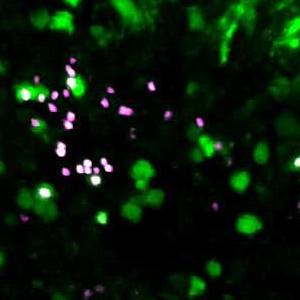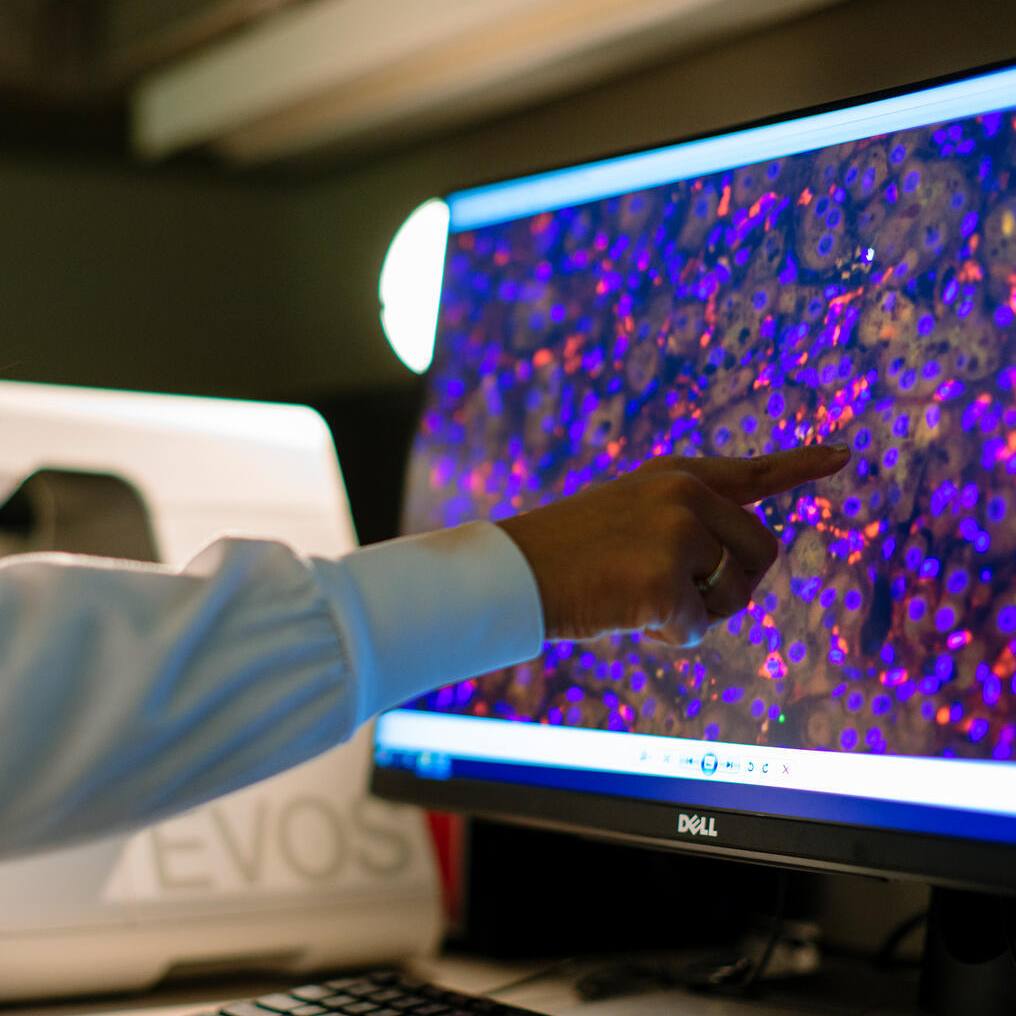-
Advances in medulloblastoma treatment for children

By Nicole Brudos Ferrara
Though rare, medulloblastoma is the most common cancerous brain tumor in children. These tumors begin in the lower back part of the brain called the cerebellum, which is important for balance, coordination and movement. Medulloblastomas are embryonal tumors that grow from embryonal cells left over from fetal development.
"Of all the tumors we see in pediatrics, 20% are medulloblastoma," says Jonathan Schwartz, D.O., a Mayo Clinic Comprehensive Cancer Center pediatric neuro-oncologist. About 500 children in the U.S. are diagnosed with medulloblastoma each year. "The peak age is between 5 and 7 years of age, and it's slightly more common in males," he says.
Medulloblastomas are fast-growing, aggressive tumors, but Dr. Schwartz says a better understanding of their biology, new drugs, technology and treatment techniques have improved outcomes for children.
Dr. Schwartz explains how medulloblastoma is treated, the latest treatment advances and what families should look for in a care team:
How is medulloblastoma treated in children?
Medulloblastoma treatment depends on tumor type and your child's age. "Treatment usually involves safely removing as much of the tumor as possible, followed by radiation therapy and chemotherapy," says Dr. Schwartz.
In children younger than 4, Dr. Schwartz says care teams use radiation-sparing techniques, which reduce damage to healthy tissue, and high doses of chemotherapy followed by stem cell transplant (bone marrow transplant). In children older than 4, treatment also depends on whether the tumor is average or high risk.
Medulloblastoma is considered average risk if it has not spread to other parts of the body and can be completely or almost completely removed with surgery. If the tumor has spread to other parts of the brain, spinal cord or body and cannot be completely removed with surgery, it is high risk. "If you leave more than 1.5 cubic centimeters of residual disease, we call that high risk. If it's metastatic and has spread anywhere else, it's high risk," says Dr. Schwartz.
Medulloblastoma spreads through the fluid surrounding and protecting the brain and spinal cord. "The spinal cord is like the top of a waterfall," says Dr. Schwartz. "If tumor cells circulate, they could go anywhere around the brain or spine. We always look at the full brain and spine when imaging during treatment and follow-up because the tumor cells can drop and sit at the bottom of the spinal cord. We deliver chemotherapy and radiation to the whole brain and spine to reduce the likelihood of recurrence."
If medulloblastoma recurs, Dr. Schwartz says care teams turn to other aggressive treatments, including chemotherapy and clinical trials for vaccines, chimeric antigen receptor (CAR)-T cell therapy, and other viral therapies. "It's an aggressive disease. That's why we treat it aggressively. If medulloblastoma recurs, we know treatment is generally not curative," he says.

What are the latest advances in medulloblastoma treatment?
Medulloblastomas are now diagnosed using molecular analysis.
"The world of neuro-oncology has changed dramatically — in a positive way — in 15 years," says Dr. Schwartz. He says one of the biggest medulloblastoma treatment advances is the shift from diagnosing medulloblastoma based on tissue examination under a microscope (histologic diagnosis) to analysis of molecules, such as DNA, RNA and proteins, from a tissue or fluid sample (molecular diagnosis).
"The world of neuro-oncology has changed dramatically — in a positive way — in 15 years."DR. JONATHAN SCHWARTZ
Based on molecular diagnostic tests, medulloblastoma tumors are now categorized into four subgroups, and healthcare professionals understand that each requires a different treatment approach. "We now know that you shouldn't treat them all the same. We know that the five-year overall survival for WNT-activated medulloblastoma is 100%. Other subgroups have lower survival or are likely to recur," says Dr. Schwartz.
Understanding these differences between medulloblastoma tumors has helped care teams tailor treatment plans for each child and their tumor type and improve survival and quality of life.
Researchers are studying radiation and chemotherapy dose reduction.
Dr. Schwartz is conducting a clinical trial to study whether reduced doses of radiation therapy and chemotherapy can effectively treat patients with newly diagnosed medulloblastoma tumors in WNT-driven medulloblastoma, the least aggressive tumor subgroup. "If someone has 100% chance of survival, can we de-escalate the therapy? That's the question we're asking in a clinical trial through the Children's Oncology Group," he says.
"Recent studies have shown radiation and chemotherapy to be effective in treating patients with WNT medulloblastoma, but we're concerned about the late effects of treatment, which can include learning difficulties, reduced amounts of hormones and other problems," says Dr. Schwartz. Late effects of cancer treatment appear after treatment ends. Children who undergo cancer treatment may be at risk for more late effects than adults because their bones, tissues and organs grow quickly, and cancer treatment can interfere with that growth.
Protection against chemotherapy-related hearing loss.
Cisplatin, a chemotherapy drug effective in treating medulloblastoma, is associated with hearing loss. Research has shown this may be due to the drug's accumulation in the inner ear. "Most patients who had cisplatin to treat medulloblastoma wear hearing aids," says Dr. Schwartz.
Care teams now have a tool to protect children with medulloblastoma from chemotherapy-related hearing loss. In 2022, the FDA approved the use of sodium thiosulfate to reduce the risk of cisplatin-associated hearing loss in children one month and older who have solid tumors that have not spread. Sodium thiosulfate is given to patients as an IV infusion following cisplatin infusion.
What should families look for in a medulloblastoma care team?
Dr. Schwartz says families should seek care from healthcare professionals who can offer a comprehensive team approach and the latest technology. He says a team of brain tumor specialists who have cared for a high volume of children with medulloblastoma can offer the best possible diagnosis, care and outcomes.
"We have a team approach at Mayo Clinic. We start with oncology, neurology, neurosurgery, social work and radiology. Because we have a high volume of tumor patients, we're experts at seeing the right, the wrong, the middle, and the weird complications and tumors with atypical neuropathology. We have excellent neuropathologists. Their work is critical to getting the right diagnosis so we know how to treat the tumor appropriately. You need a skilled neurosurgeon who knows how to operate on these tumors and give kids the best chance at survival."
"You need a skilled neurosurgeon who knows how to operate on these tumors and give kids the best chance at survival."DR. JONATHAN SCHWARTZ
Proton beam therapy, which delivers precise radiotherapy with lower doses of radiation to healthy tissue, is also important for children whose organs are still developing, says Dr. Schwartz. "With proton radiation, we can outline exactly where to treat. And that energy goes to that area and drops off — virtually none goes beyond the tumor. With traditional X-ray radiation in young children, there's radiation scatter, so you're radiating the heart, lungs, liver, diaphragm, kidneys, abdominal organs and other critical brain areas," he says.
If your child has been diagnosed with medulloblastoma, Dr. Schwartz wants you to know there is hope and help available. "There's always hope until there isn't. The question is: How do we give this family the best possible journey? How do we best take care of these patients?"
Learn more
Learn more about medulloblastoma and find a clinical trial at Mayo Clinic.
Join the Brain Tumor Support Group or the Caregivers Support Group on Mayo Clinic Connect, an online community moderated by Mayo Clinic for patients and caregivers.
This article first published on the Mayo Clinic Comprehensive Cancer Center blog.







